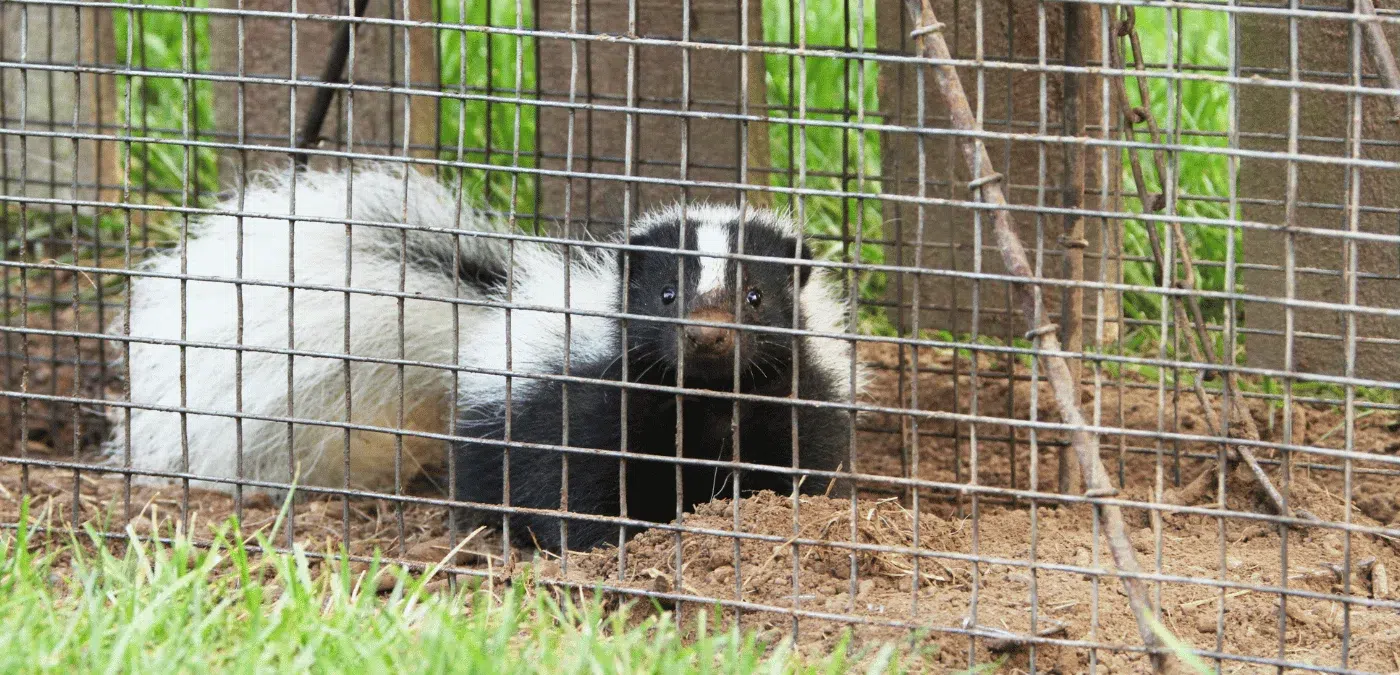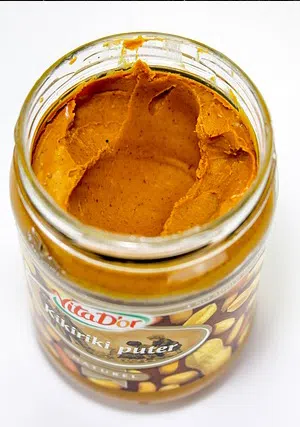Ahh, the unmistakable aroma of a skunk! Is it hanging around your home? The skunk AND the smell? Well, it may be time to issue an eviction notice to your furry visitors. Let's have a look at why they may hang around your home and yard and how you can reclaim your space.

Why Do Skunks Enter Urban Areas?
Skunks are actually quite timid, but opportunistic little creatures. They generally won't go out of their way to pick a fight (except perhaps with your chickens or other poultry livestock) but their presence is not desirable, for a host of reasons. One of those reasons is the potential of being rabies carriers, and concern for the saftety of your pets and your family. Other reasons include nuisance damage in your yard and garden, and yes, that lovely aroma that can linger for weeks and make you want to keep your doors and windows closed, no matter the weather.
Food Availability
The number one reason for skunks arriving and choosing to stay around your property is food. Well, food and water. From your well intentioned bowls set out for your pets to the grubs in your lawn and the goodies in your vegetable garden. From the eggs in your chicken coop to the chickens, quail, or other birds themselves, Being fond of dead things as well, your trash bin and compost are also mighty attractive. And then, there's an abundance of mice, moles, voles, rats, songbirds and their eggs, and carcasses as well as grasshoppers, wasps, bees, crickets, beetles, and beetle larvae. So, you see, your yard makes for a convenient one-stop shop.
Shelter
Then, of course, there is shelter. All creatures need shelter - from the elements, from predators, and to raise a family. And again, your yard may provide some high quality real estate. The space below your deck or porch is perfect for tucking away for a mid-day snooze, as is any hollow tree, unused machinery, or unsecured shed. Skunks are most active at night and prefer a quiet, low traffic area to rest during the day.
Reduced Predation
When it comes to predators, your yard may be a safer option for the skunk, but said skunk may invite larger predators to your yard. In the wild, skunks fall prey to coyotes, fox, bobcats, and even large birds of prey (mostly owls). You likely don't have a whole lot of those animals residing in your backyard, so that's a good thing for the skunk. But, if you allow the skunk to stay in and around your yard, you may well end up with one of those predators going after the skunk, and that's going to open a whole new can of.. well, any of those.
Dos of Humane Skunk Trapping
Alright, so you've decided that enough is enough and that skunk has got to go. Understandable. When choosing a trap, it is important to select the right size and type. Above all, we do not want to cause harm or undue stress to the animal. The trap also needs to be checked at least twice a day. The animal cannot be left unattended in the trap for prolonged periods of time. Here's what else you'll need to know and consider when it comes to trapping a skunk:
Choosing the Right Trap
You should choose a medium or large live animal trap - a steel cage kind of trap that is spring-loaded to shut the door once tripped. The trap should be 25 to 35 inches long and allow the animal to stand up and turn around. If you can find a trap with solid walls, rather than steel or mesh, go with that. DYI skunk traps are acceptable, as long as they are spacious enough and will not injure the animal.
Proper Trap Placement
Skunk trap placement is fairly straight forward: place the trap securely on solid ground and in the area you've spotted the skunk(s). If it is a steel cage trap, cover the trap with a blanket or large towel. You'll want to prevent the skunk from seeing you and getting startled when you approach.
 Baiting Techniques
Baiting Techniques
Baiting skunk traps can be tricky. Canned cat food and anything fish(y) works wonders, but may also attract actual cats or other animals. The same goes for bacon, So, it depends on what other critters come in and out of your yard. If your own or the neighbour's kitty aren't a concern, then go ahead with canned fish or cat food. If you're unsure about what you may end up catching in your trap, it may be safer to go with something like marshmallows. Yep, marshmallow. Oh - and peanut butter! Skunks have a bit of a sweet tooth, but then, who doesn't? Whatever you choose as bait for your trap, it needs to be placed far enough inside the trap that the animal’s whole body would have entered the cage before the spring gets triggered and the door gets shut. Again, we want to make sure that the animal does not get injured in the process.
Safe Handling and Transportation
Please check your trap in the morning and in the evening. Don't leave the animal in the trap any longer than necessary. If you placed a blanket or towl over the trap, or if you opted for a trap with solid walls, the skunk should be unable to see you approaching. Skunks don't usually spray what they cannot see. Move the trap gently and slowly. In accordance with Ontario Wildlife Control regulations, you may release the skunk no further than one kilometer away from where it was caught. Set the trap down (again, gently) and open the door, step away and watch the skunk leave from a distance. If you are at all unsure about the handling and transportation of your trapped skunk, please consider a professional skunk trapping service.
Don'ts of a Skunk Trap
 Don't: Illegally Trap
Don't: Illegally Trap
Under no circumstances should you use a Conibear trap. First off, you would need to possess a furbearer's license and secondly, these traps are NOT humane. Although cited as body-holding or gripping traps, animals are often critically injured when caught in these traps, resulting in a prolonged and agonizing death.
Don't: Leave Unattended
We've mentioned before that you must check on your trap and your charge. The release should be facilitated as quickly as possible, so as not to cause undue stress or harm to the skunk.
Don't: Relocate Skunks Long Distances
The law in Ontario states that you may release a captured animal up to one km from the trapping site. Reasons for this include the relocated animal not being able to compete in a new territory, as well the potential spread of disease. You can read more here »
Alternatives to a Live Animal Trap
Additional measures should be taken either after successfully trapping a skunk or in lieu of trapping and relocation. In order to prevent future skunks in your yard, you will need to remove or alter the conditions that brought them there in the first place.
Exclusion Techniques
Before attempting any exclusion techniques, please be absolutely sure that there are no kits (skunk babies) - that you do not separate a mother from her young. Doing so would likely sentence the babies to a long and horrible death of starvation. Once you are sure that you are dealing with a single adult skunk, go ahead and close off and/or repair any openings present around your home. Pay close attention to access to spaces under your deck or porch, any holes in foundation or siding. If you are considering fencing your garden, make sure to bury the base of your fence 10-12 inches below ground level. Skunks are prolific diggers
Habitat Modification
The single most effective way to make your home less attractive to skunks (and other wildlife!) is to remove food sources and water. Feed your pets indoors; also store your animal feed inside. Properly secure your trash and compost bins or move them into a locked shed, if possible. Clean up any fallen fruit and keep your yard tidy overall.
Hawkeye Knows Humane Skunk Removal Techniques and More!
Dealing with wildlife can be overwhelming, time consuming, and potentially even dangerous. If you have any doubts about trapping and relocating skunks on your own, take advantage of our humane skunk trapping experience and expertise. Hawkeye Bird & Animal Control is your one-stop wildlife control provider. Contact us today for a free estimate and assesment of your situation.














